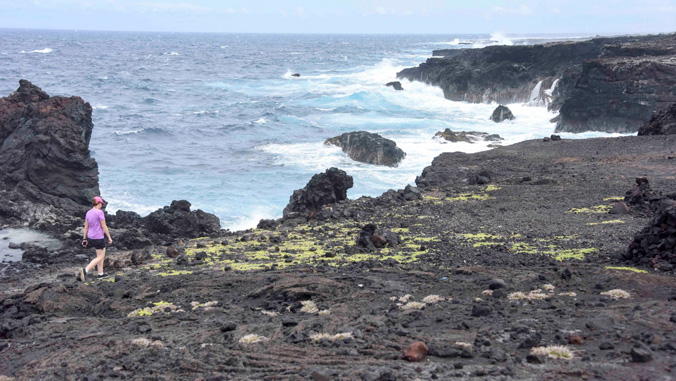
The results of a collaborative research project led by a graduate student at the University of Hawaiʻi at Hilo have been published as a case study in the U.S. Climate Resilience Toolkit, a website where the public can find information and tools to understand and address climate risks. The case study also has been published regionally on the Pacific Islands Regional Climate Assessment website.
The UH Hilo study examines shoreline migration on Hawaiʻi Island and combines historic aerial photos, current drone imagery and topographic surveys to discover coastal changes around Hawaiʻi Island. The project is being used by county planners and policymakers to develop a more comprehensive and effective coastal development plan.

The published case study, “Reality Check: Collaborative Research Contributes to Real-Life Policy Decisions,” is co-authored by Scott Laursen, program specialist at the UH Pacific Islands Climate Adaptation Science Center, and Bethany Morrison, a planner on land use with the County of Hawaiʻi who collaborated on the research.
“We do not have adequate knowledge of Hawaiʻi Island’s shoreline to be able to assess and adapt to the vulnerabilities from sea level rise and related hazards,” Morrison explained. “The goals of this project will help us to address these challenges. More specifically, Hawaiʻi County will have a first phase of shoreline change rates and sea-level rise projections for three different types of shorelines.”
In May 2018, the research team presented their findings to the county planning department, which administers planning regulations for the entire island and provides technical advice to the mayor, planning commission and county council. Based on analyses at Hāpuna, Honoliʻi and Kapoho, the team suggested ways the county could use scientific data to create place-based setbacks.
“Directly involving local professional networks within every stage of the scientific method roots research products within the place-based experiences of these natural and cultural resource managers,” Laursen explains in an email. “[This] increases the probability that these products will be utilized.”
Looking to the future and the uncertainty associated with climate change, the combined results of the completed study will be used to develop policies that are increasingly adaptive to present and future coastal change.
Read the full story at the UH Hilo Stories website.
—By Susan Enright

